I tested four of the best road bikes under £1800/$2400, and you really do get a lot more road bike for your money than you did ten years ago
This road bike test reminded me just how far we've come and that there is performance on offer without spending a fortune
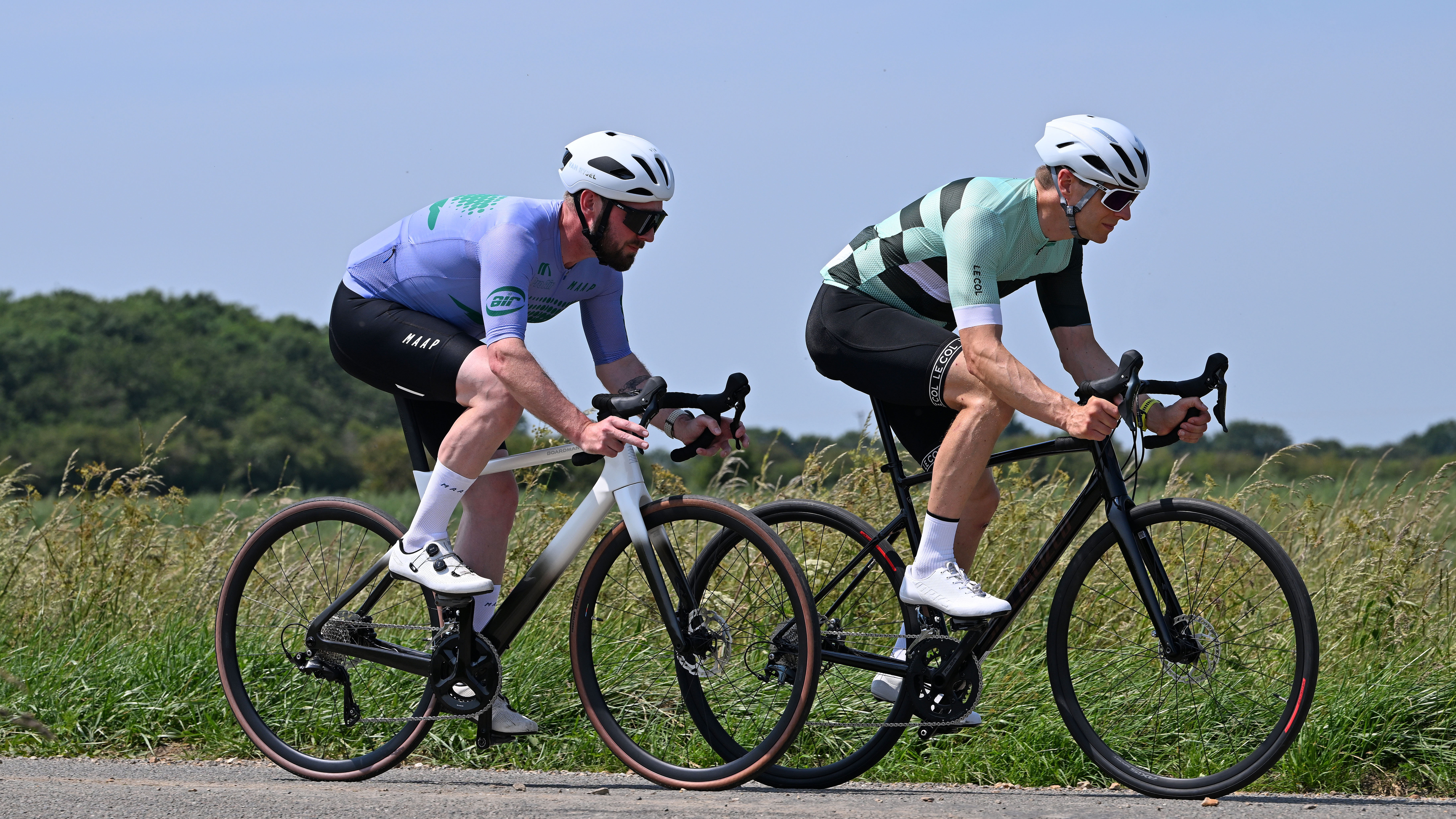
Whether you’re lucky enough to be starting out in cycling with a £2000/$2100 budget, or you're just inspired by the Tour de France this month and keen to upgrade, you are somewhat spoilt for choice at this price point.
Contrary to what we often hear, you get far more now from the best budget road bikes than you did 10 years ago. Carbon steerers have improved weight and steering response, hydraulic discs are now the norm and 12 speed shifting is available too. What’s even more remarkable is that one bike in the test has not just been roughed out in simulations; it’s actually been wind tunnel-verified to check its aero performance.
Carbon isn't the only game in town either. I was also reminded just how much value you can get by sticking with aluminium and that your next road bike needn't be carbon. Worries about harsh ride characteristics are less of a worry than they used to be, as every bike in this test proved ably, and anyone who says one material is infinitely better than another, hasn't tested many.
I still find that manufacturers struggle to meet everyone’s needs with a single tyre. Still, the test reminds us how far we’ve come in other areas, with flawless shifting and up to 12 speeds available, thanks to Shimano's fantastic 105 mechanical groupset. When shifts feel this light and accurate, it's hard to justify the investment needed for the electronic versions and the home mechanic need never worry about feeling out of their depth, if you want to maintain these bikes yourself.
That's enough preamble from me, let's look at how these budget road bikes performed when I ran them head-to-head. It is worth noting that all the bikes in this test have cheaper versions, which retain many of the advantages identified here but come in at lower price points, so if you don't consider the lowest price bikes in this test affordable, there should be more sensible options further down the range.
Giant Contend SL
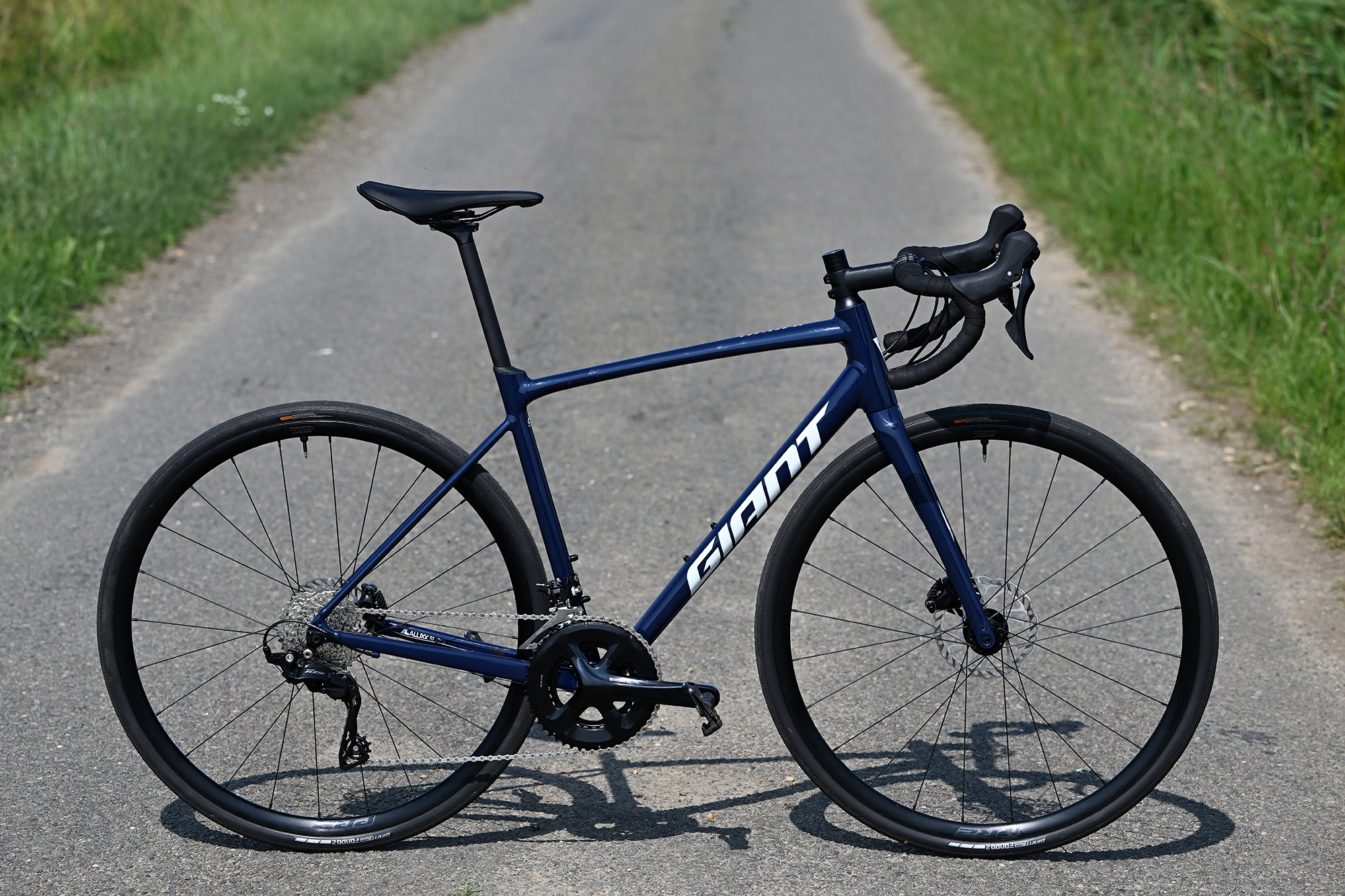
Giant Contend SL 1
Our expert review:
Specifications
Reasons to buy
Reasons to avoid
In a market where many direct-to-consumer brands can offer carbon frames, it’s easy to overlook the value of a well-executed alloy road bike. The Giant Contend SL 1 is just that, showing there's still plenty of life left in aluminium - if it’s done right. Retailing for £1,649/$2100 and weighing in at 9.5kg, this is a bike that offers a thoughtful spec, solid performance, and real-world versatility without trying too hard to be something it’s not.
Built around Giant’s ALUXX SL-grade alloy frame and matched with a full carbon fork, the Contend SL 1 has a balanced geometry that straddles the line between sporty and endurance. It’s quick without being twitchy, composed without feeling dull. The 412mm chainstays contribute to an engaging ride feel, while the OverDrive steerer gives the front end a touch more precision, albeit with a bit of feedback over rougher surfaces.
Shimano’s mechanical 105 12-speed groupset provides smooth, reliable shifting, and although the chainset isn’t from the main 105 line, the performance is more than adequate. Braking is handled by Shimano hydraulic calipers paired with Giant’s own rotors, and stopping power is sharp and confidence-inspiring. The P-R2 Disc wheelset is tubeless-ready and fitted with Giant’s Gavia Fondo 2 tyres in 28mm width. These aren’t the most supple tyres on the market, and they do dull the ride a touch, but they’re serviceable and easy enough to swap out.
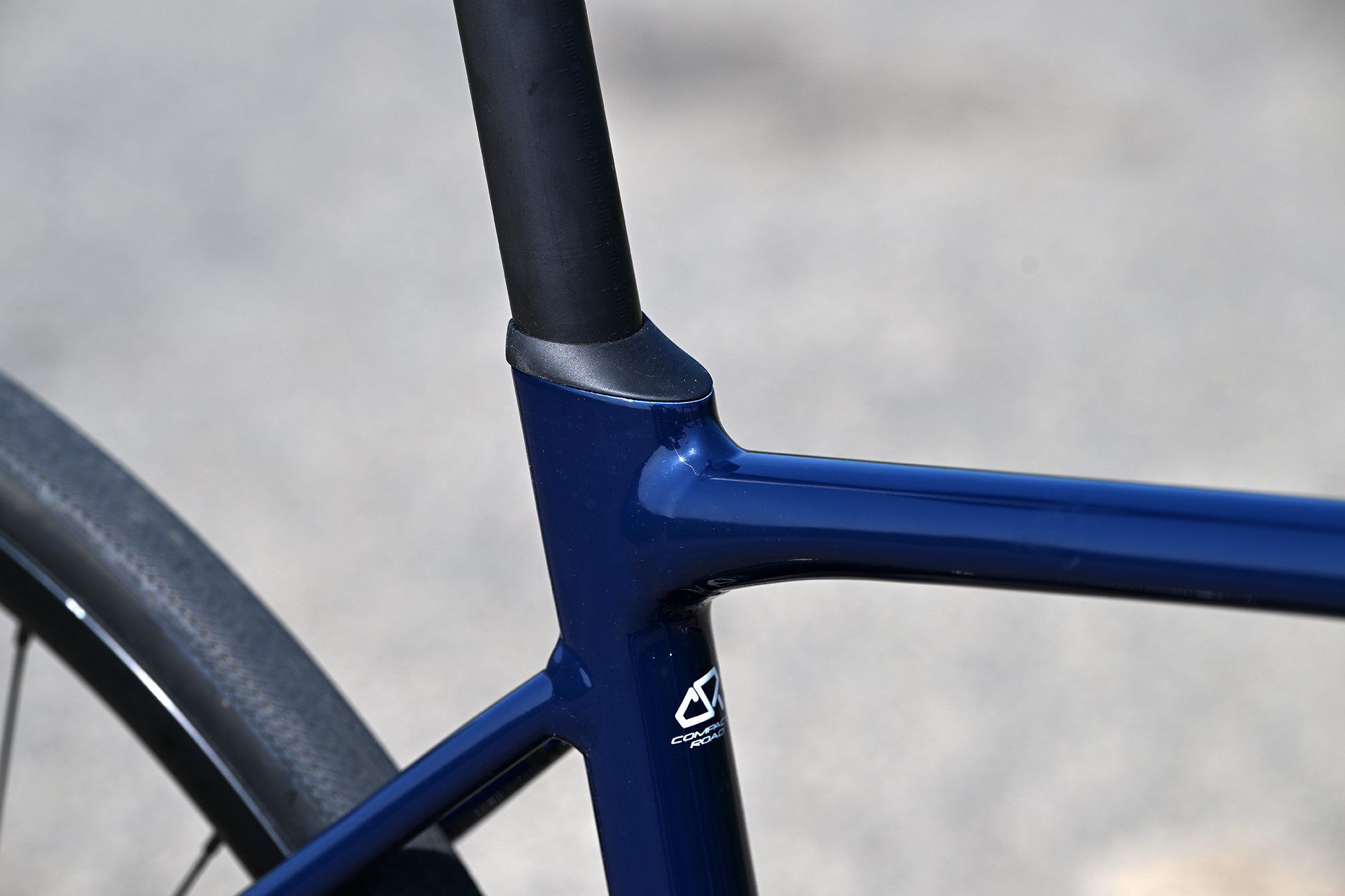
The bike feels composed on longer rides, helped in part by the composite D-Fuse seatpost which genuinely smooths out road buzz at the rear. The saddle - Giant’s Approach model - isn’t universally comfortable and the long shape may not suit everyone, but it didn’t give me any major issues. The cockpit and fork do transmit a bit of chatter over rougher roads, and it’s here that the alloy reminds you of its limitations. That said, a better set of tyres - possibly 30mm - would help mute some of that front-end feedback. There’s clearance for 32mm, though in today’s market, that feels like the bare minimum.
Handling-wise, the Contend SL 1 is a pleasure. I tested the M/L size, and once the front end was set low, the bike responded with a liveliness you don’t always expect from a mid-tier alloy frame. On descents, it remained composed, and through tight corners, the short rear end made for playful, precise steering. It rewards input without punishing you for missteps.
Looks-wise, the Contend plays it safe, but cleanly. Internal cable routing helps, and the paint finish is solid, if understated. Mudguard mounts add practicality without visual clutter.
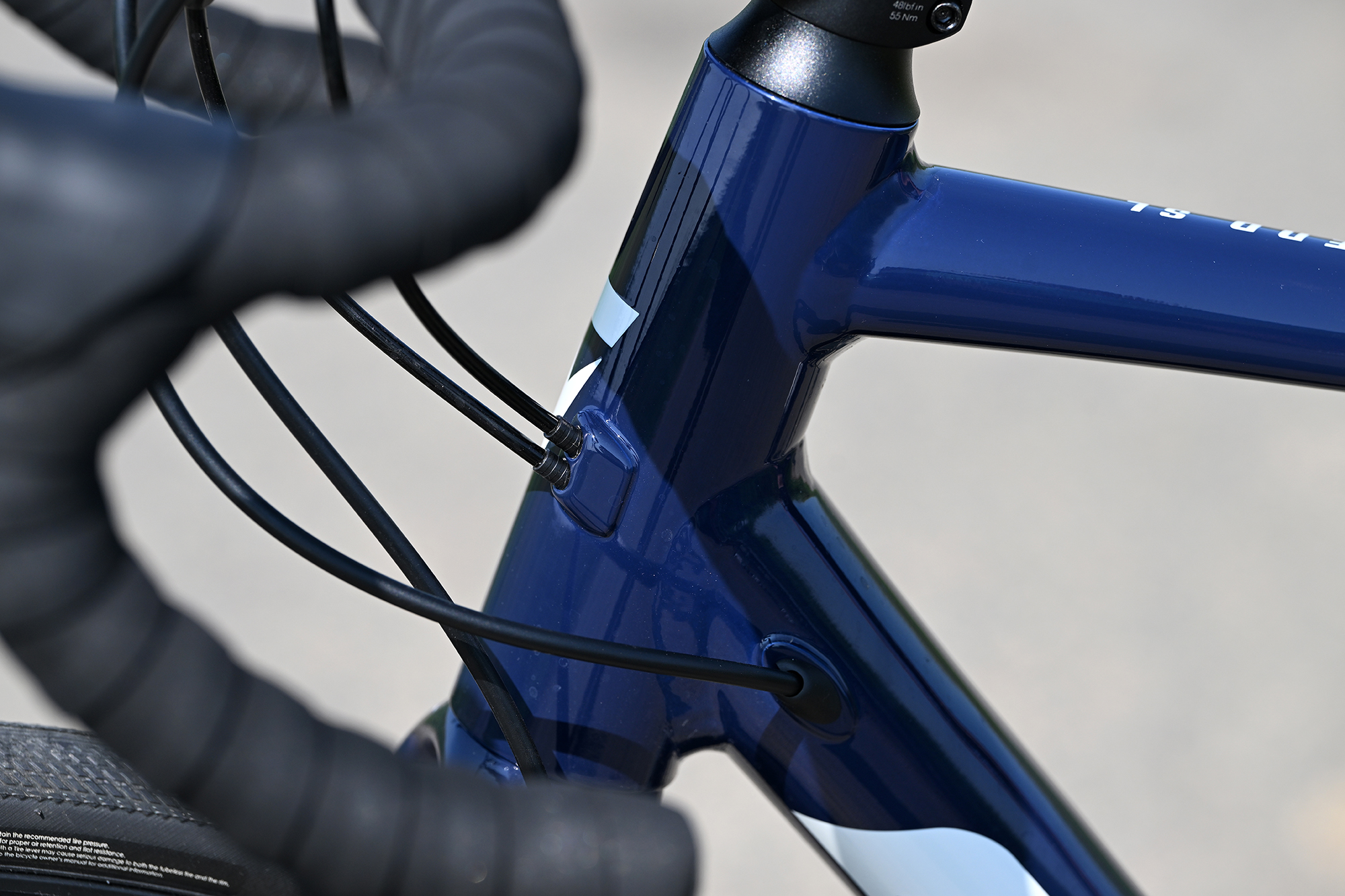
In short, the Contend SL 1 proves that you don’t need carbon to have a good time on the road. It’s not flashy, but it’s well-built, nicely specced, and just plain enjoyable to ride. For riders who want reliable performance without breaking the bank - or sacrificing versatility - it’s hard not to recommend.
Boardman SLR 9.0
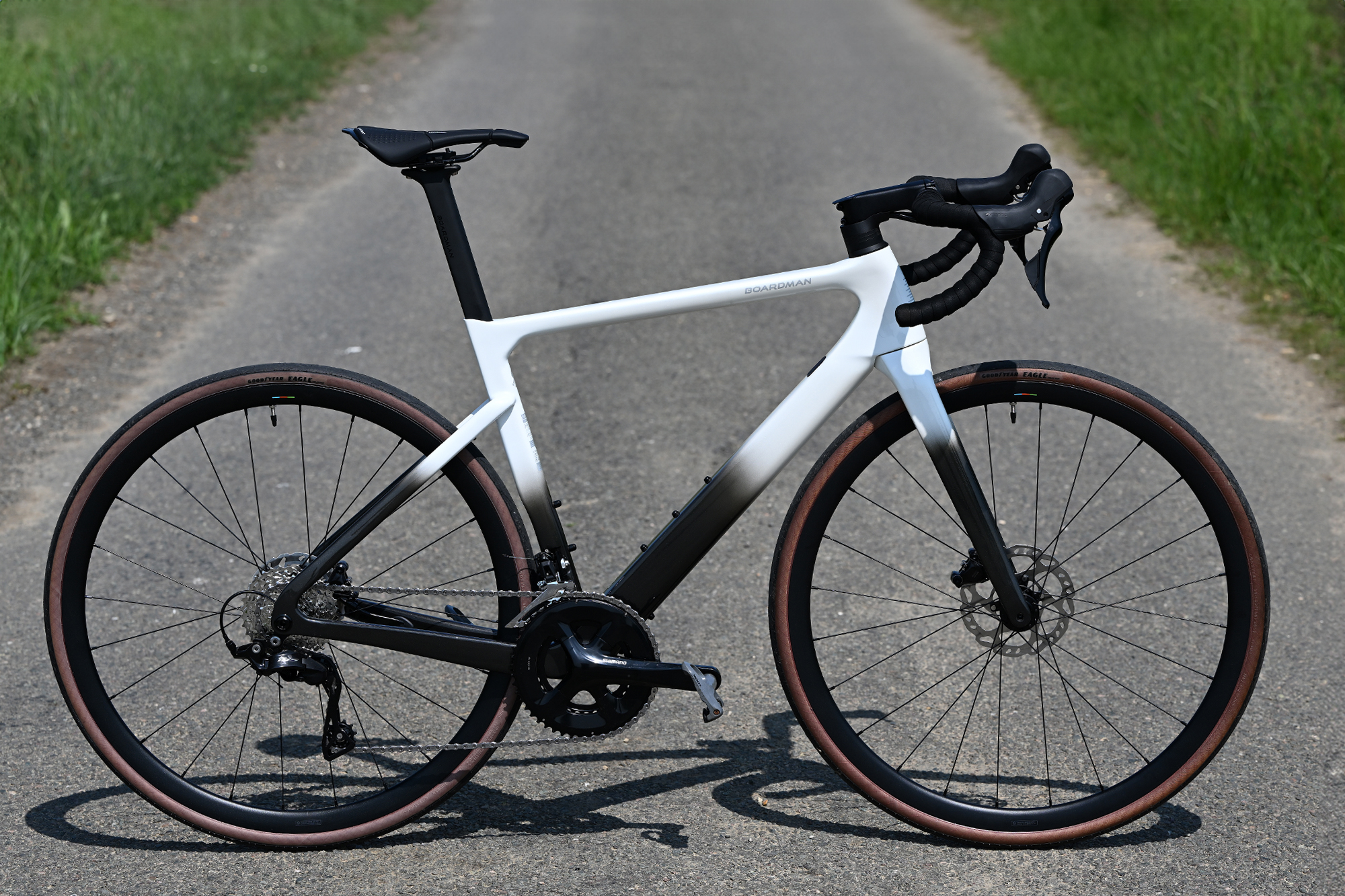
Boardman SLR 9.0
Our expert review:
Specifications
Reasons to buy
Reasons to avoid
The SLR 9.0 from Boardman is a good-looking bike. But the spec sheet is exceptional for a bike at this price point. It features a CFD-tested and wind-tunnel-verified full carbon frame, fork, and steerer, along with a 105 groupset (with non-series chainset) finished with a stunning off-white pearl into metallic black fade. Although it is the most expensive bike in this test, it’s also the only carbon bike.
You also get a ProLogo Scratch M5, and while saddle choice is personal, this is a high-quality item in a contemporary 145mm width, featuring a substantial relief channel. The branded goodies continue, with GoodYear Sport tyres in 30mm and there’s room for 36mm if you need it. They look great in tan walls against the off-white of the frame and work well in wet or dry conditions. I had no flats. They’re a standout tyre in this test.
The wheelset is an Alex setup, and they look the part at 30mm deep, in keeping with the aero aesthetics. They rolled smoothly and remained true throughout the entire test, indicating that the build quality appears to be decent. They are tubeless-ready, which is a big plus.
There’s a D-shaped seat post, which is nicely finished and compliant, with two lay-back options, which is refreshing at this price point.
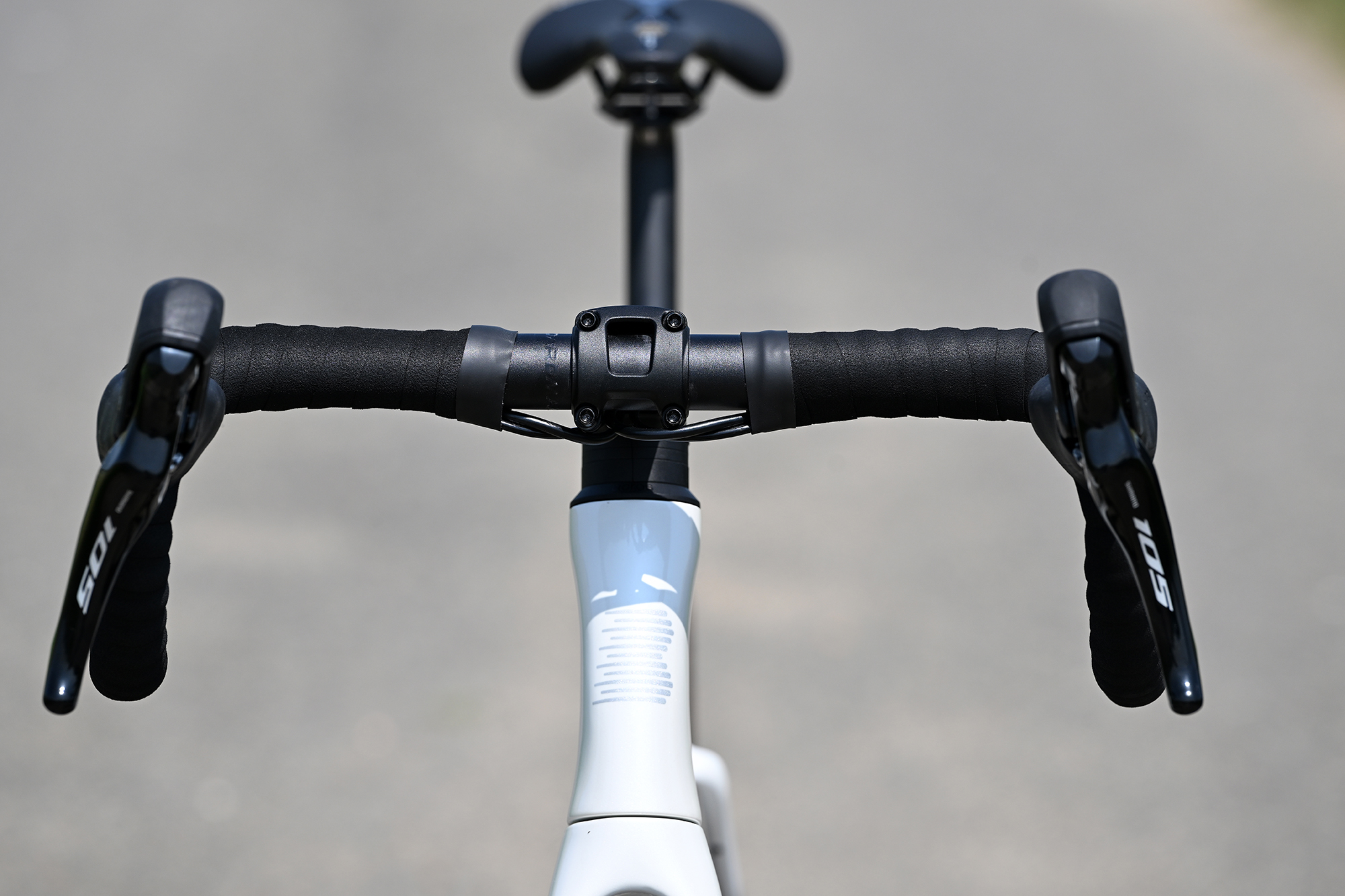
The Boardman's thoughtful design feels special and looks great, one such example is the cable routing, where it's not overly restricted, practical in it's execution and looks good.
The cable routing is via a two-piece cockpit, thank goodness, but looks the part in a clever compromise that will give you more flexibility to adjust the fit. The cables run through a faired stem, called SLR ICR, using cheap-to-replace ACROS head bearings. The slightly relieved cable path here doesn’t seem to hinder the shifting experience in operation, although you may need to monitor service intervals to maintain it. The handlebar choice reflects the performance intent, being only 40cm wide.
The light action of the Shimano 105 mechanical groupset reminds me how excellent mechanical shifting is these days. As for the gearing, the combination of 12-speed, 50-34 and 11-32 out back is spot on.
It might have race bike looks, but the SLR is hiding stacks of practicality with nicely concealed mudguard mounts and plenty of extra bottle bosses. There’s also a UDH hanger for T-mount rear derailleur systems, for a little future proofing, and the comfort of knowing you can get a rear mech hanger anywhere.
The bottom bracket is a BB386EVO. BB386 is a Shimano standard and much improved from early Cannondale derived press fit systems. This is the only non-threaded bottom bracket in the test, but the payoff here is a wider, more substantial pedalling platform.
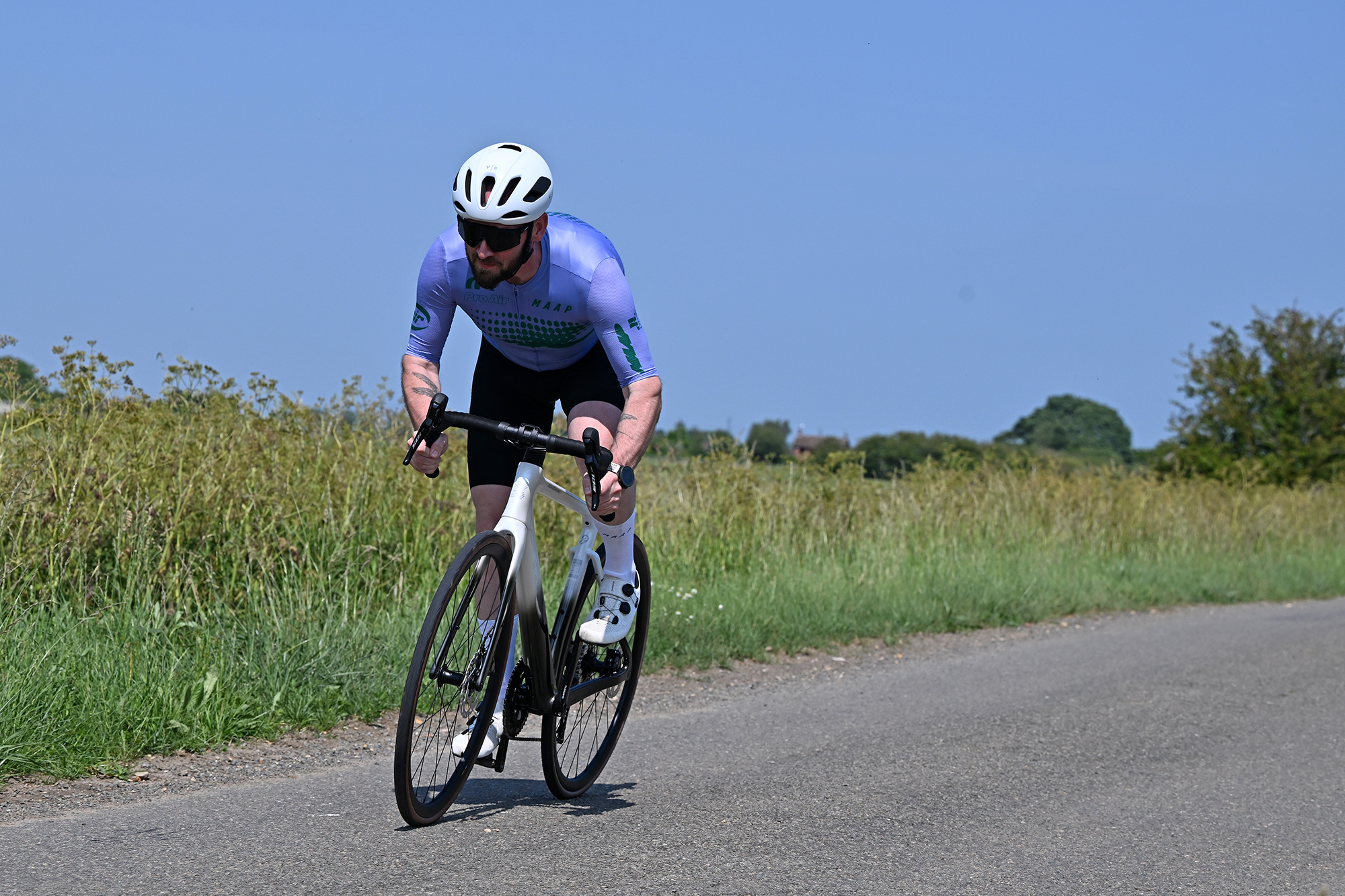
Geometry is more all-road than all-out race bike, despite the looks. That’s no bad thing of course and this bike is relatively low at the front end if you need it to be.
At 9.2kg, it’s certainly not heavy. An upgrade to the competent but uninspiring Alex wheelset would bring that number crashing down into the mid-to-high 8kg area, if that was important to you.
Out-of-the-saddle efforts are solid, with no vagueness in the power transfer. Ride quality is more than acceptable with no jarring. The only mild criticism comes via a slightly neutral feeling in terms of feedback and handling, but it never feels boring and it’s about right for a ride out with mates, or a PB at that 100-mile sportive you’ve been aiming for all year.
This is a bike that’s trying to do a lot of things well, and doing a very good job of it, whilst looking much fancier than its price tag.
Specialized Allez Sport
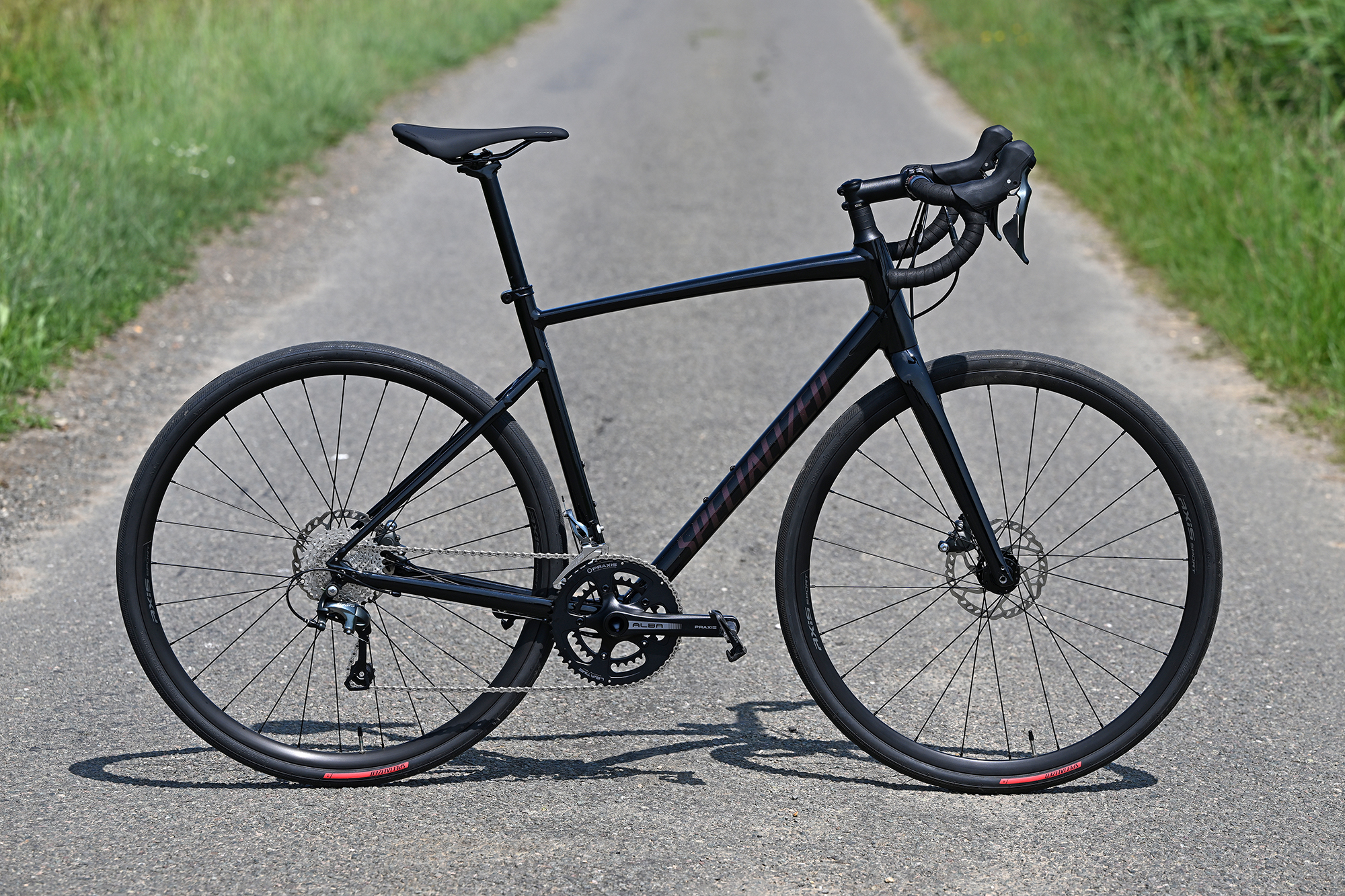
The Specialized Allez Sport on test looked resplendent in a metallic paint job, which added a sense of occasion to swinging your leg over the bike.
Specialized Allez Sport Disc
Our expert review:
Specifications
Reasons to buy
Reasons to avoid
The Allez retails at £1600, £100 cheaper than the Domane. But they both share a Tiagra 10-speed mechanical 50-34 2x set up with an 11-32 cassette. Most of the parts are from in-house brands. On paper, then, they’re very similar offerings.
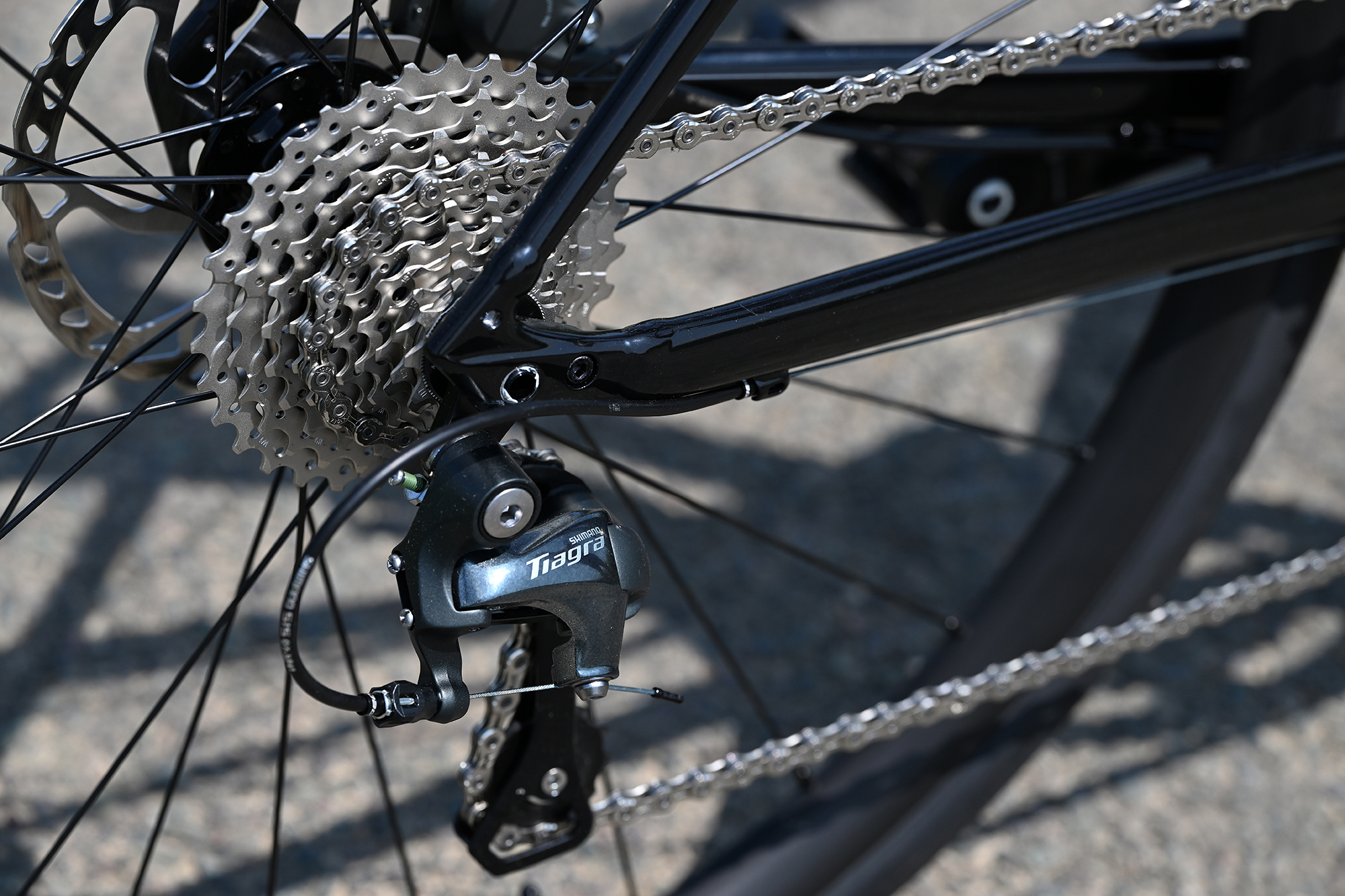
Shimano's 10-speed Tiagra drivetrain is currently the japanese company's cheapest dedicated road groupset. That said, shifting is excellent and it's a doddle to look after and adjust.
This bike has the Allez name, however. One that’s been synonymous with a back door into high-performance road bikes for years. If it has the Allez name, it has that legacy to live up to.
More than a pretender to the Tarmac, the Allez was the bike of choice for weekend racers who didn't want to risk riding a carbon frame. With this version, Specialized has started with Roubaix geometry and tweaked it, and its judgment is spot on. It’s not as lively as the Allez of old, but the balanced sensation remains, and it is a fun and eager bike to ride.
The wheelbase is slightly shorter than that of the Domane on test, and this, combined with the responsive frame, really does make it feel like a very different bike to the Trek, despite similar trail values.
This bike doesn’t feel as sharp as a full-fat Allez used to be, but it’s not intended to. The Allez Sport is a good stepping stone to a more responsive bike, or a suitable choice for someone who wants some road bike excitement but also craves more practicality. I get the sense that either customer would be very happy.
As well as riding a little more like a race bike, you also feel more involved in the steering, making for a livelier and more direct ride.
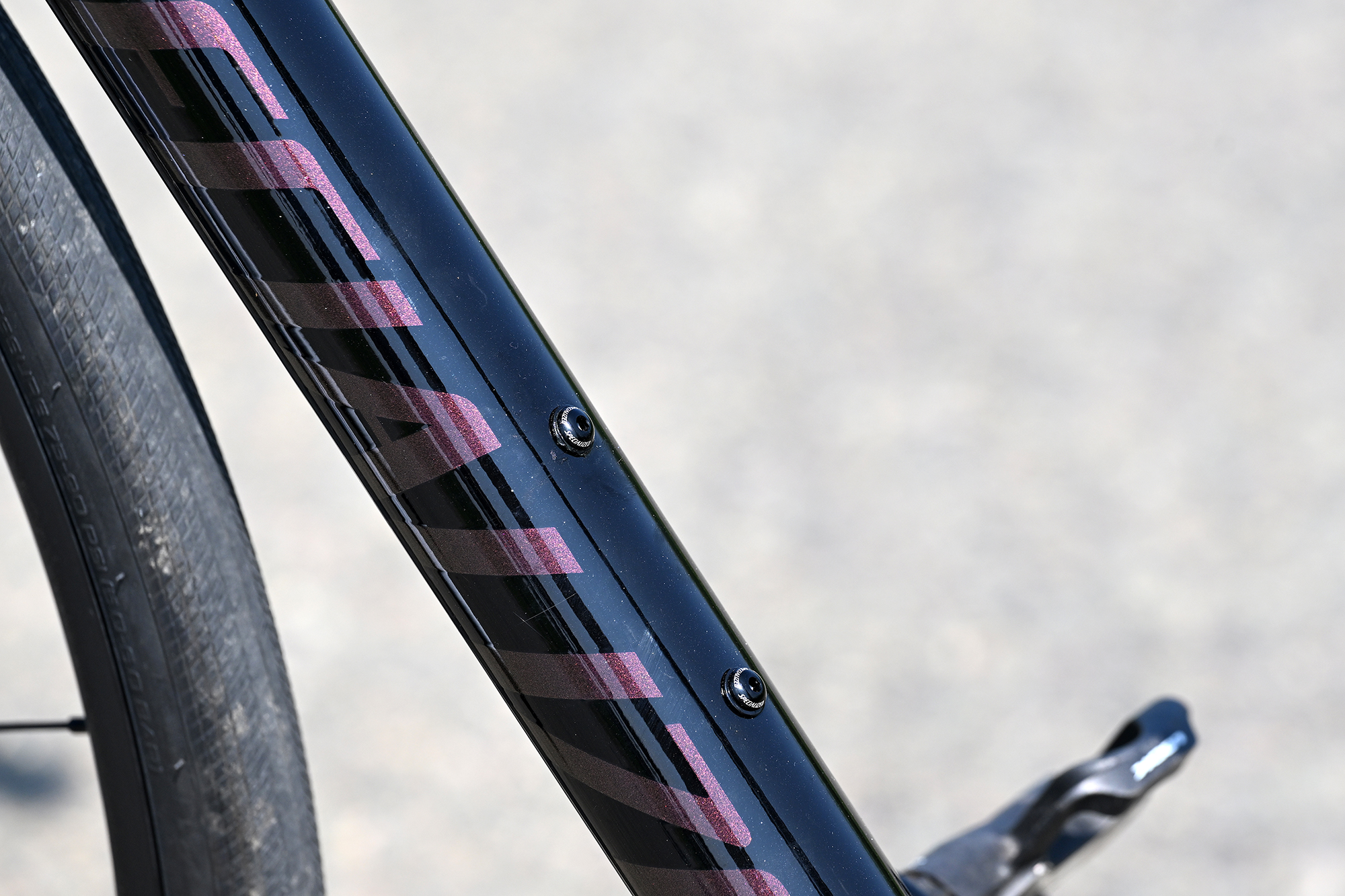
What looks like a black paint job at first glance, hides a lovely deep finish with a metallic flake in the decals.
The tyres and wheelset don’t let the bike down as such, but like the Trek Domane, they’re bombproof, so there’s a compromise in that in terms of trading puncture protection and longevity, for the greater sensation you get from a more focused tyre on a more lively wheel set up.
In the case of this Allez Sport, Specialized seems to have managed those always subjective judgements about just how far to go with the handling numbers really nicely, the slightly shorter wheelbase here works to create a livelier riding bike more befitting of the Allez name and makes it slightly more fun to ride than the Trek.
If you can visit a dealer, take a close look at the colour schemes carefully. This one stands out and looks great on a sunny day, making it feel special in a way that I suspect the flat grey version won’t.
Trek Domane AL4
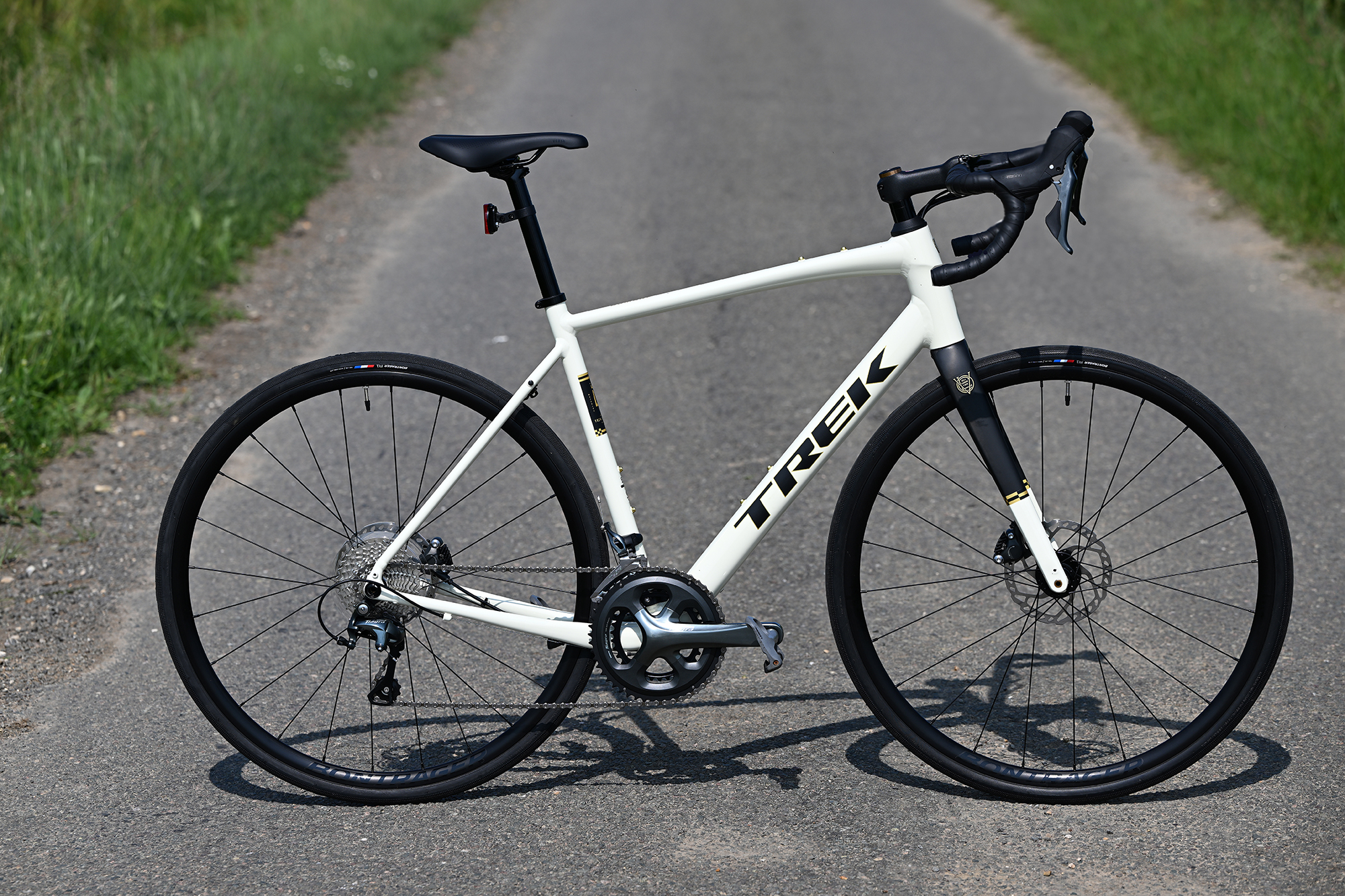
Trek Domane AL4 with its very tidy old english white and black paint and rather lovely gold accents. This was the bike on test that felt the most special aesthetically, with nice details and colour coded parts.
Trek Domane AL4 Gen 4
Our expert review:
Specifications
Reasons to buy
Reasons to avoid
Trek talks up the Domane AL4 as being both speedy and versatile, and it certainly is the latter. With a Shimano 10-speed Tiagra groupset, and bosses for everything you might need, including racks and mudguards, this is a great bike on which to take on a big sportive or go on an adventure, where reliability, practicality and comfort are needed.
Handling is self-assured and straightforward, not exciting. Exactly as it’s designed to be. With a trail value of 61mm, it’s no slower steering than anything else here, except the Giant, with a sharper 58mm trail set up. It’s all very confidence-inspiring, especially when you’re in the market for a bike that’s going to expand your road cycling experience, which is who this bike is ideal for.
When you buy a big brand from vertically integrated bike companies, you get a lot of its parts, and this is no exception. Bontrager dominates the spec sheet. The Bontrager Paradigm SL wheelset is likely bombproof, with zero issues on test. Only a copper with a stinger could flat the Bontrager R1 Hard-Case Lite in 30mm, but there are no fancy logos on show, just competent bits engineered for reliability.
The saddle is well-padded and tactile, and will suit a lot of bottoms with its contemporary noseless shape, and is exceptionally well-suited to the more upright riding position this bike delivers.
In practice, some of these choices do hold the bike back somewhat in the feel and handling department. If you do start out with this bike, which could serve you well for many years, then a well-timed upgrade to a set of premium tyres and upgraded wheels could bring some beneficial magic to your ride feel.
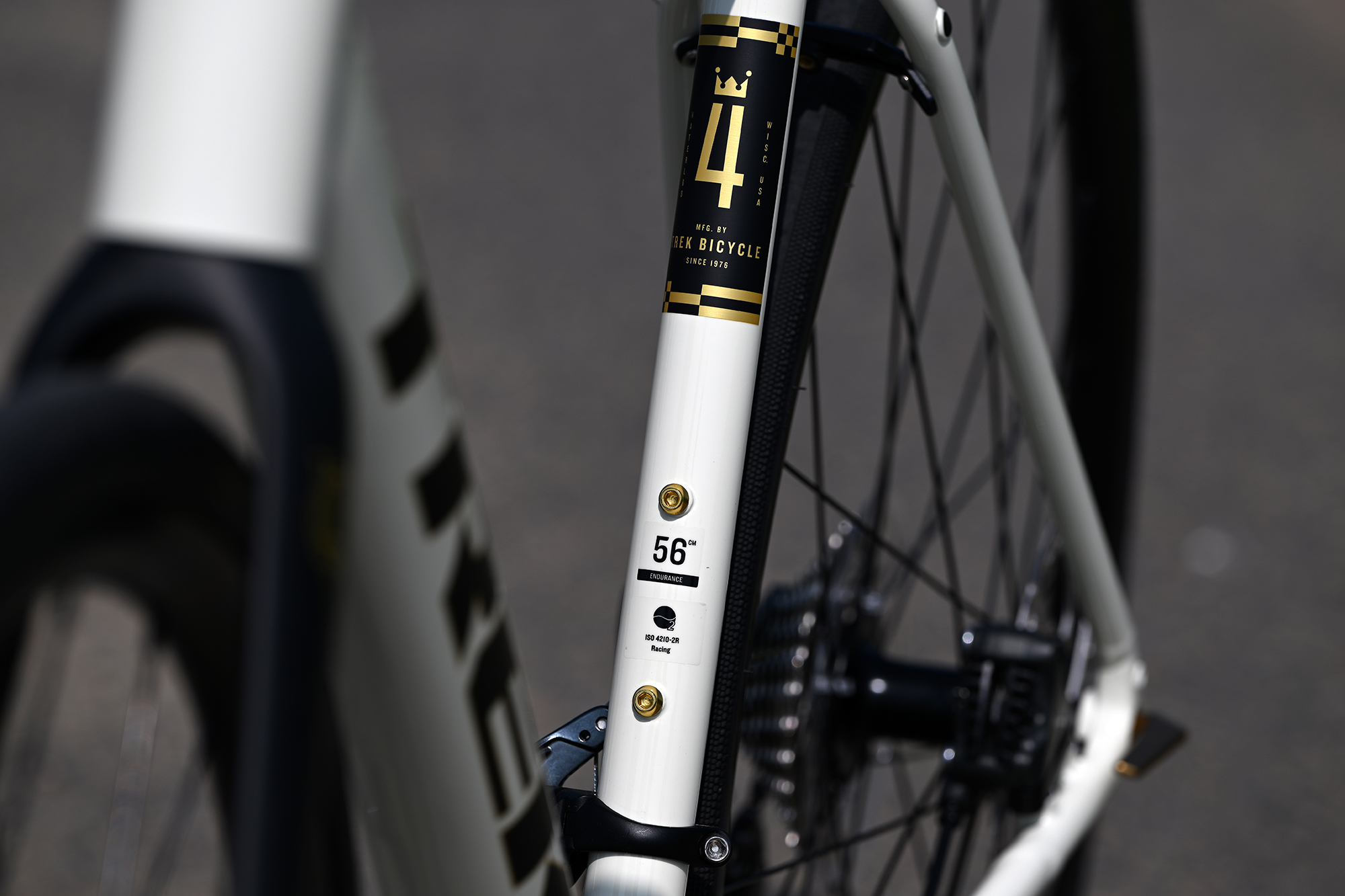
Trek Domane AL 4 is packed with lovely detail, matching bottle cage bolts, thru axles and headset spacer tied into the paint and decals.
Where Trek has spent time to make this bike impressive is in some lovely details. This is certainly a bike that might stand out in the shop, and the gold detailing is thoughtful, sprinkled throughout the bike in a way that gives it a premium feel. It’s a lovely-looking bike, and the hydroformed tubing and headtube mimics the profiles and lines of the other Trek-family frames you’ll enjoy spotting in the pro peloton.
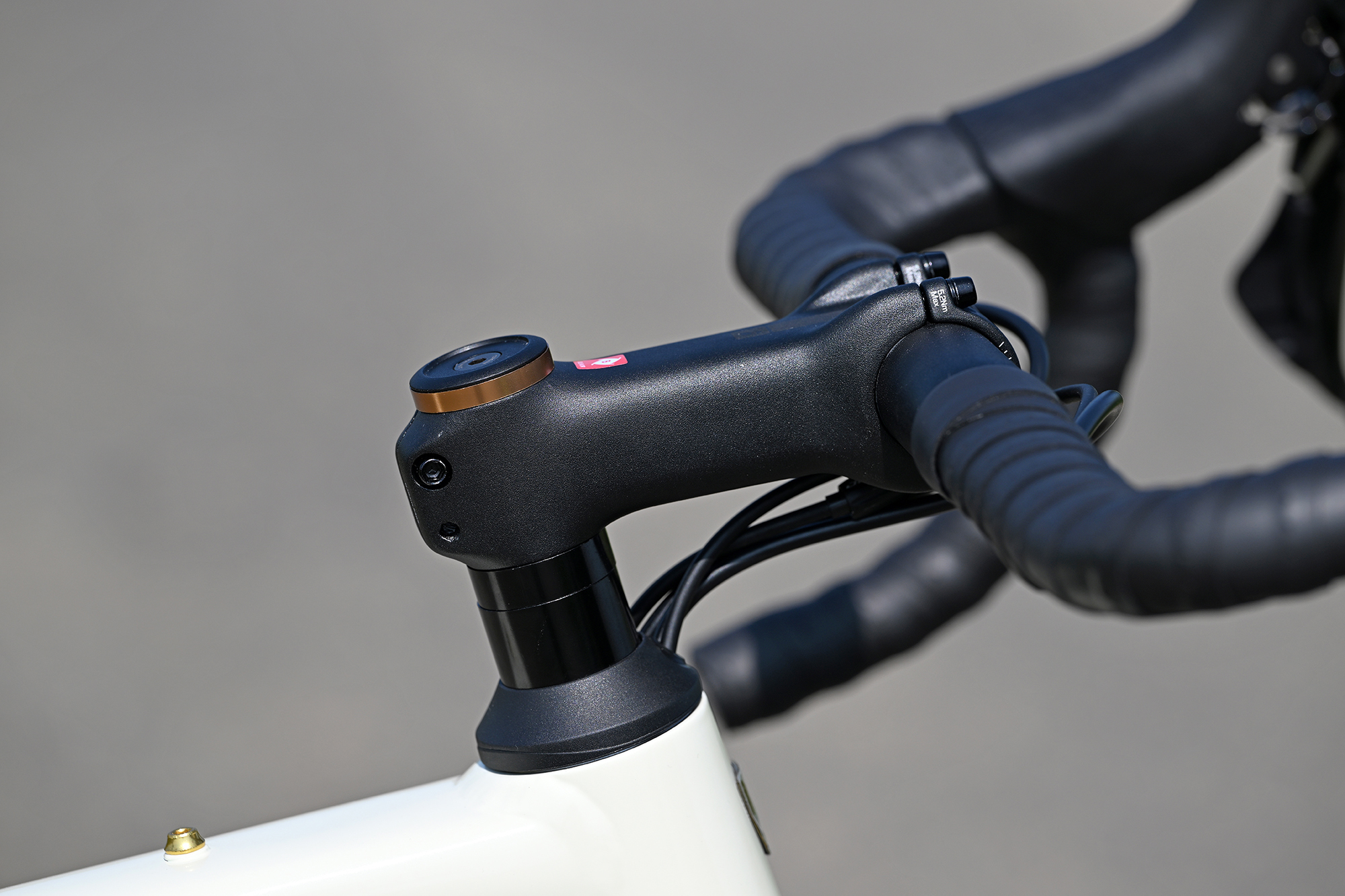
The integrated headset cable routing on the trek domane AL 4 makes things more complicated than they need to be for set up. Everything is wound in tight, and will cause your mechanic some headaches.
The cable routing however doesn’t make sense. The way Trek has approached it is baffling. It adds so much friction I could barely fit the handlebars, such was the tension on the tightly packed cables that ran externally, and the cables running into the headset are fixed solidly with zero adjustment without taking the front end apart.
Issues with routing aside –once set up you can ignore that – this is a very competent, incredibly practical and good-looking bike, that should be easy to live with, ride and enjoy in a variety of different settings.
Where brands like Trek and Specialised struggle is in matching specs with the second-tier brands, who seem to squeeze more equipment onto their bikes for the same price point.
This bike is crying out for a little zing to go with the bling, but as a steady, solid and practical bike for building confidence or to load up and take on long adventures, Trek has answered the brief well.
How we tested these budget road bikes
To thoroughly test any of the best road bikes, regardless of price, category, or intended use, there's very little substitute for time on the bike. All the bikes in this test were tested extensively in the Cotswolds in the case of the Giant, Lincolnshire where we gathered all the bikes for the shoot, and Norfolk where we spent the most time. There we have a vast network of quiet roads and mixed surfaces on which we put all of the bikes in this test through their paces. Rolling hills on varied terrain, give us access to plenty of bends and elevation changes too, in quiet traffic where I can focus on the bikes and their individual strengths and weaknesses.
During my rides around the quiet back lanes of Norfolk, bikes like these are actually extremely well suited to the terrain, their handling characteristics suit the available routes, and we can fully consider how design choices and the parts chosen, might benefit less experienced riders. And of course, how they might work for people who've spent much longer on a bike, like us.
Entry level bikes often go to people getting into cycling at the first floor, where mechanical skills could be low, or need nurturing. By assembling these bikes ourselves, straight out of the box, we get proper insight into how thoughtful or otherwise the brands have been in considering the end user, and their user experience of unboxing and getting the bike ready for the road.
In a group test of this nature, getting out on the road in a repeatable and fair way requires that we plan shorter and longer routes that included as many of the features you're likely to encounter in the real world as possible. My loop included short climbs, rough roads with plenty of potholes and some hard-pack cycle paths. Alongside these shorter rides, which I repeated several times during the test period, revisiting and re-testing my own observations critically at times, we also completed at least one long road ride on each bike, to enable us to expose any reliability or comfort issues that might not otherwise be apparent on shorter loops.
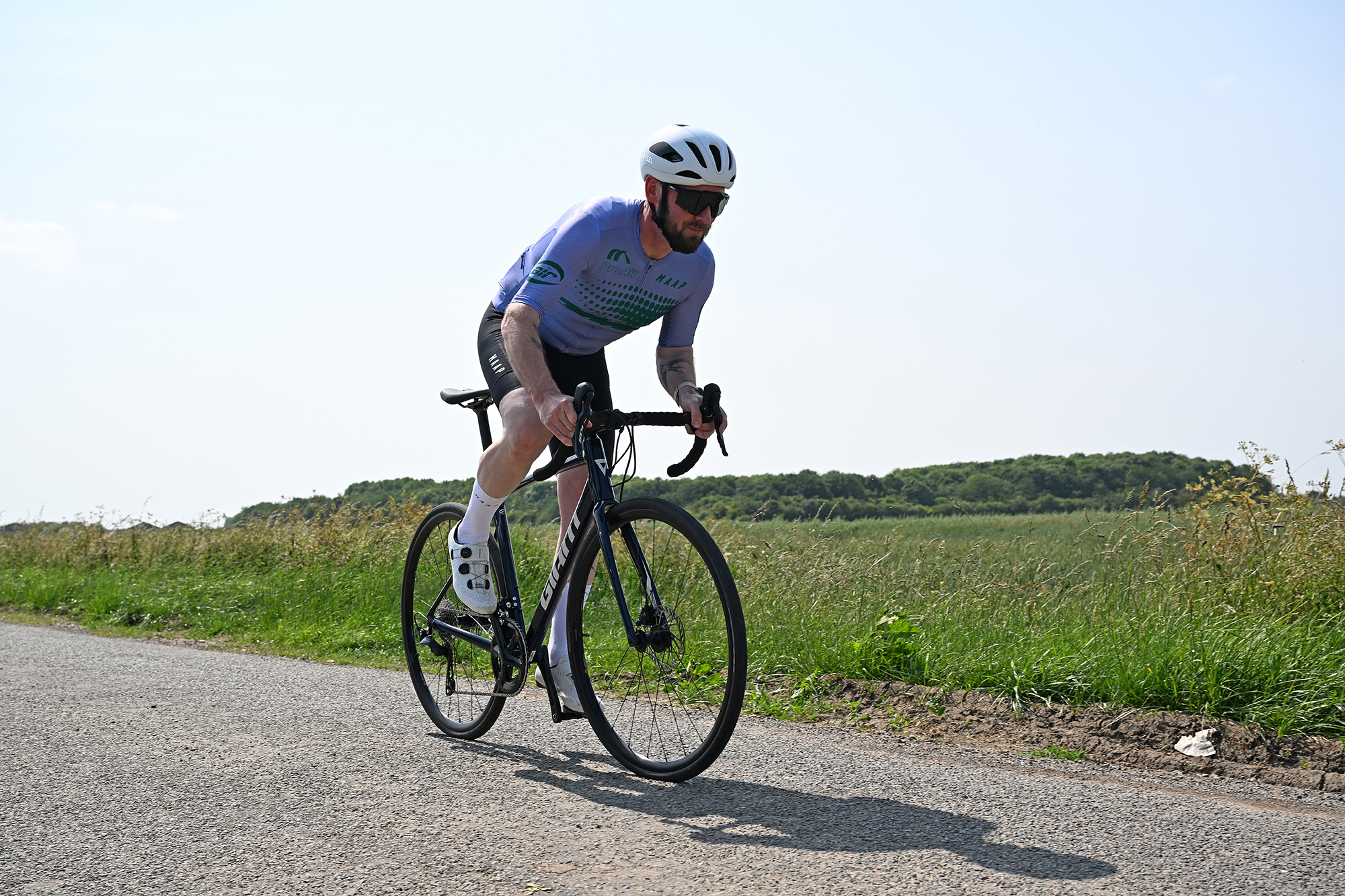
Tech editor Andy enjoying his time on the Giant Contend SL, which took the best overall in this test

Andy was the founder of Spoon Customs, where he spent ten years designing and building some of the world's most sought-after custom bikes, championing the highest standards in fit, fabrication, and finishing.
With ten years of bike design under his belt, and plenty of five star reviews for his own products earned over the years, Andy is well placed to understand what makes a good road bike, regardless of the price.
A subject matter expert on two-wheeled vehicle design, he can see far beyond the specification chart, into a bike's handling and character and has a unique insight into the design decisions bike brands take, and the economic, commercial and performance considerations that underpin them.
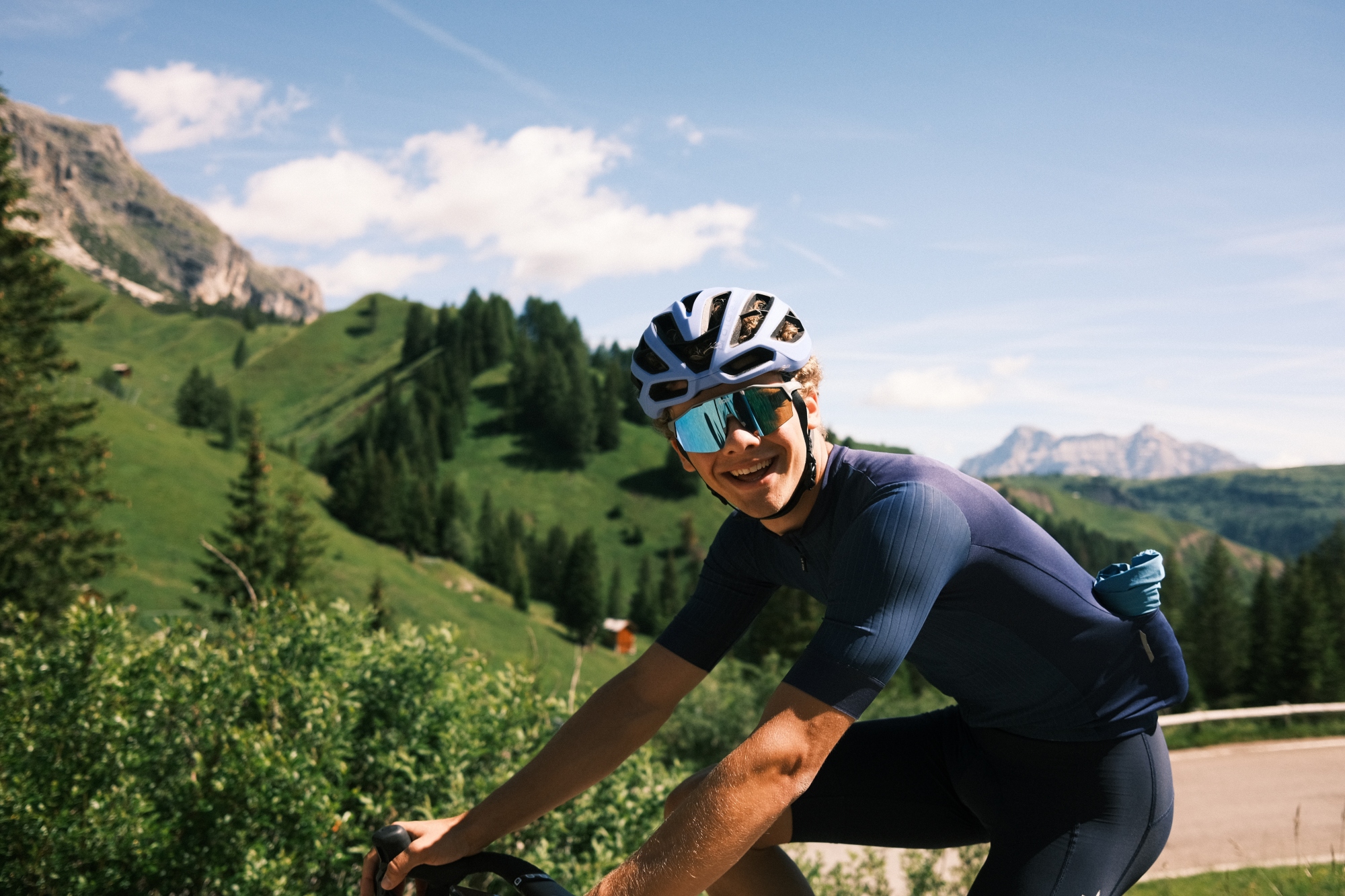
As an ex professional rider, Joe has had to find performance on any bike he's asked to ride. In his time with Cycling Weekly, before his recent move to the Alps to take more time on his bike, he has been able to test some of the world's best cycling products and performance parts over an extended period.
He's one of the few cycling journalists who's ridden bikes professionally in competition so absolutely knows how to put a bike through its paces, and make informed judgements about their performance. He's also extremely hard to keep up with!
Verdict
The good news is that there are no bad bikes in this test. Trek’s Domane AL4 is a steady hand, a solid choice. Specialized’s Allez Sport offers the same big-brand backup and straightforward approach, but with a slightly better feel from the frame and more engaging ride quality, living up to its famous name nicely, but adding way more versatility.
Boardman, however, is a smaller brand that has to try harder to stand out. In doing so it has knocked it out of the park with the SLR, cramming so much value into its full-carbon bike that it’s hard to recommend anything else.
Sadly for the Boardman, however, the runaway winner is the Giant Contend SL. It’s the bike that has kept it simple but ticked the most boxes, with a quality frame and fantastic groupset, matched with handling geometry that keeps it competitive with bikes costing three times as much.
The Giant Contend SL also proves that vertically integrated brands, which manufacture all their own parts and maintain extensive service and dealer infrastructure, don’t have to be more expensive than smaller brands.

Thank you for reading 20 articles this month* Join now for unlimited access
Enjoy your first month for just £1 / $1 / €1
*Read 5 free articles per month without a subscription

Join now for unlimited access
Try first month for just £1 / $1 / €1
The latest race content, interviews, features, reviews and expert buying guides, direct to your inbox!

Andy Carr is the tech editor at Cycling Weekly. He was founder of Spoon Customs, where for ten years, him and his team designed and built some of the world's most coveted custom bikes. The company also created Gun Control Custom Paint. Together the brands championed the highest standards in fit, fabrication and finishing.
Nowadays, Andy is based in Norfolk, where he loves riding almost anything with two-wheels. He was an alpine ride guide for a time, and gets back to the Southern Alps as often as possible.
- Joe BakerTech Writer
You must confirm your public display name before commenting
Please logout and then login again, you will then be prompted to enter your display name.
